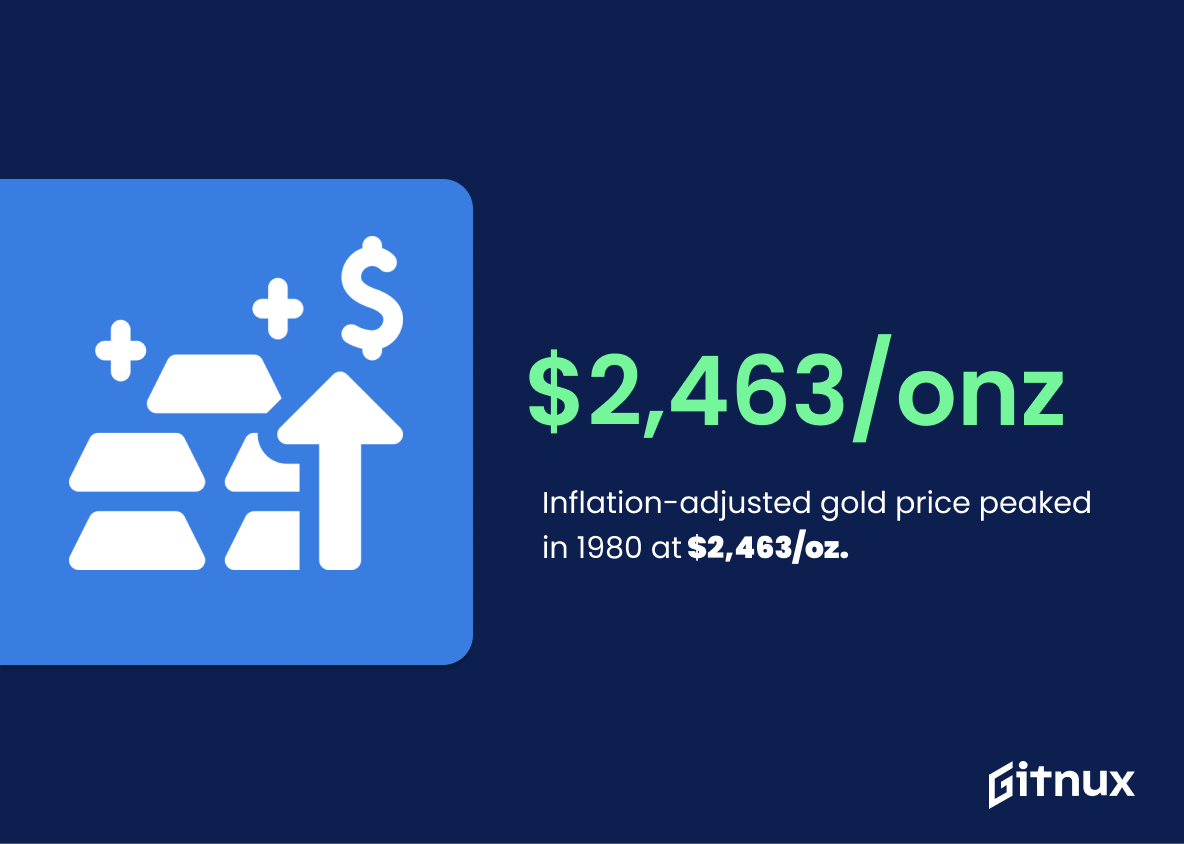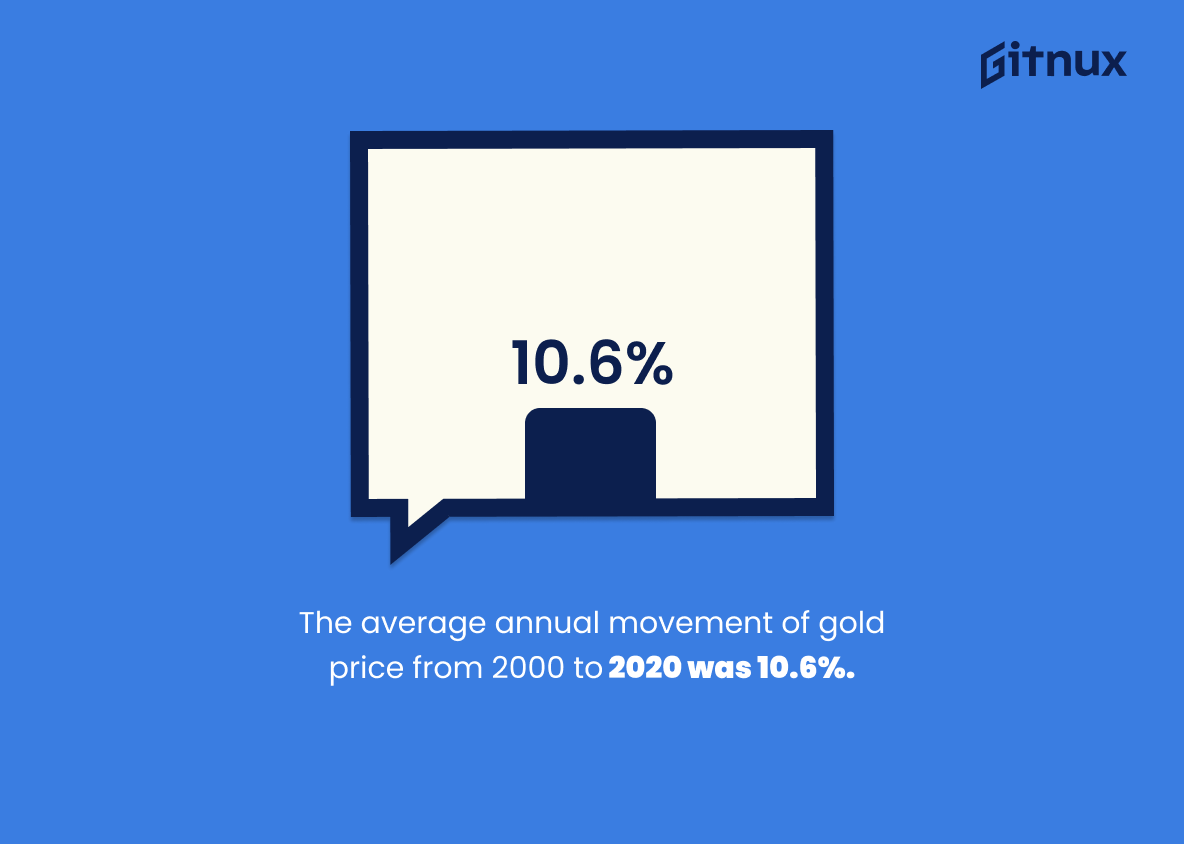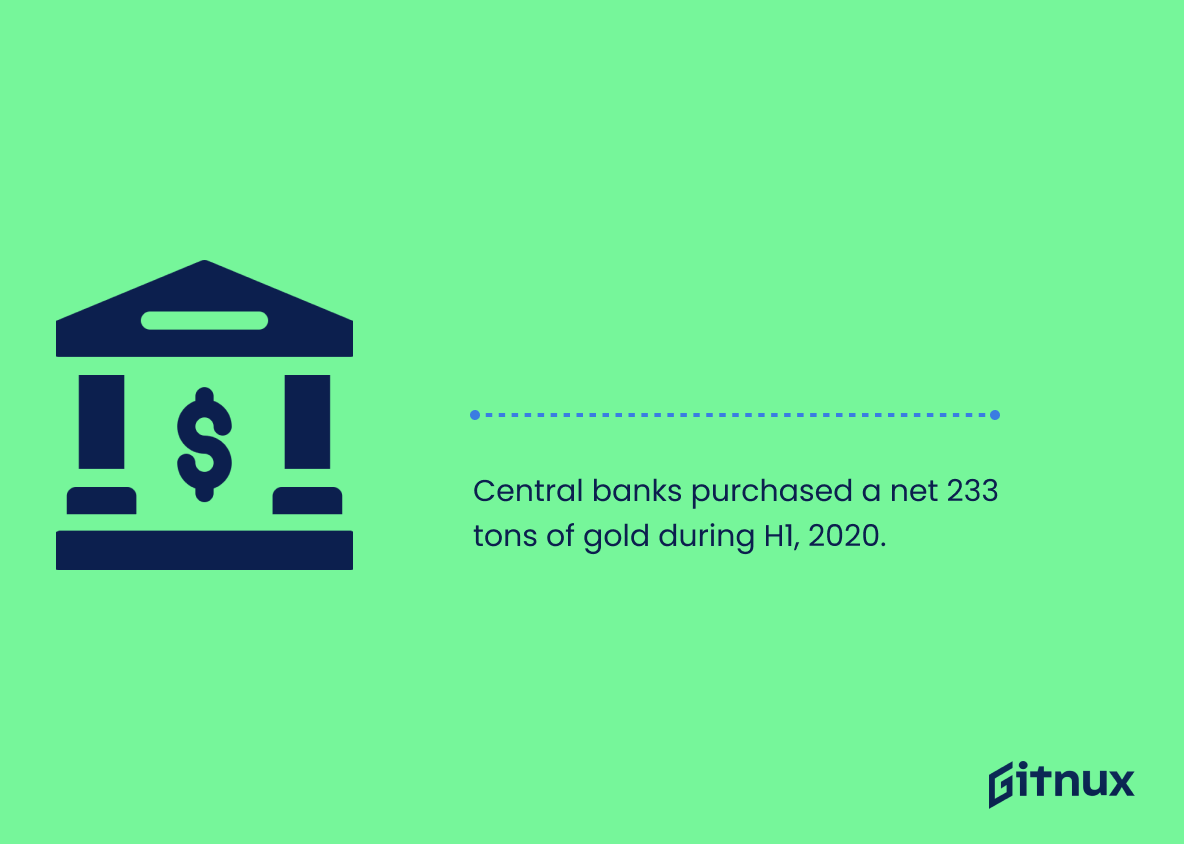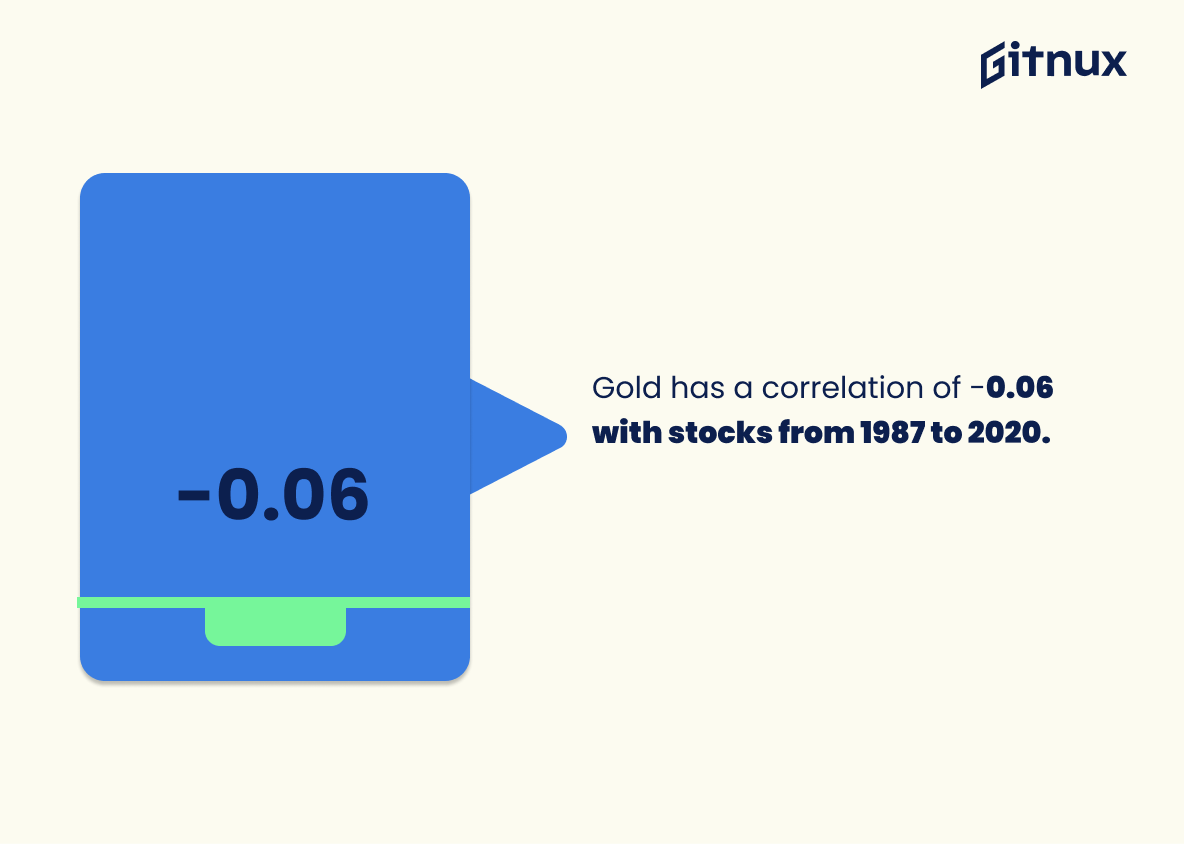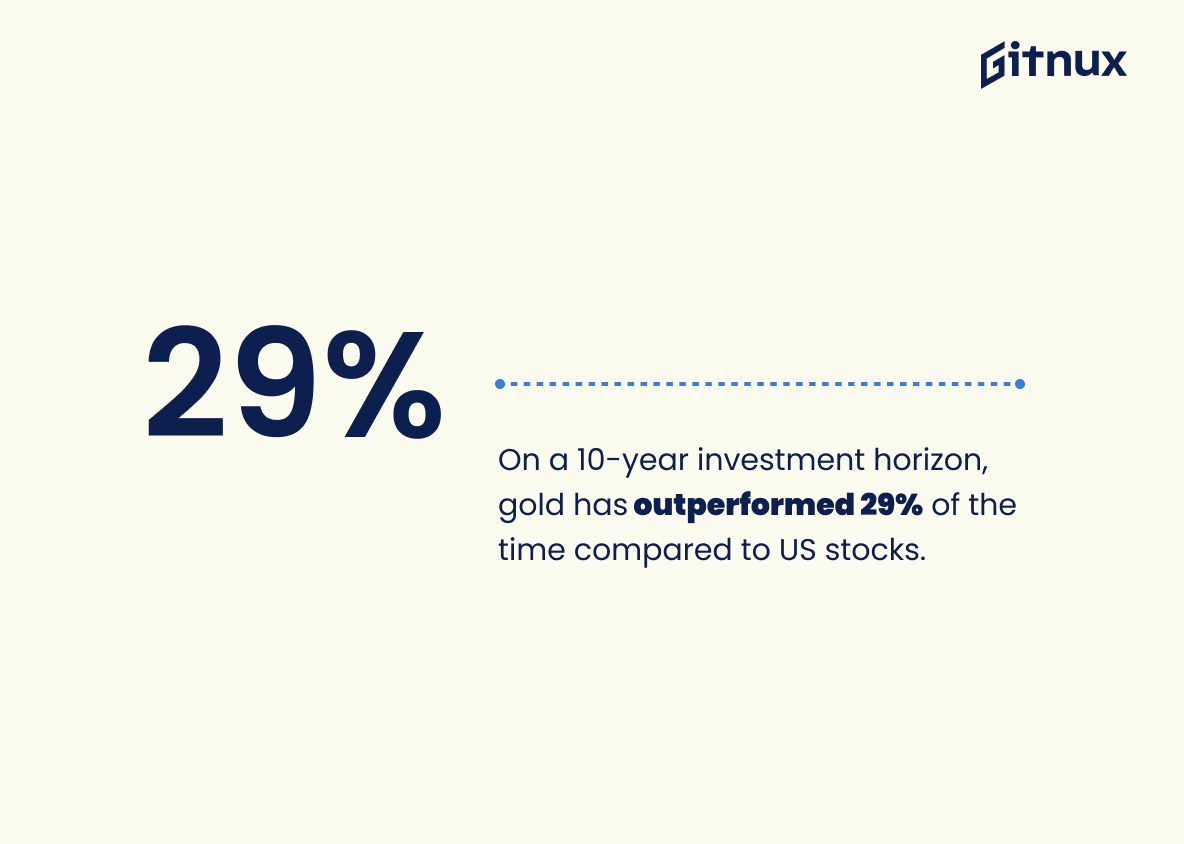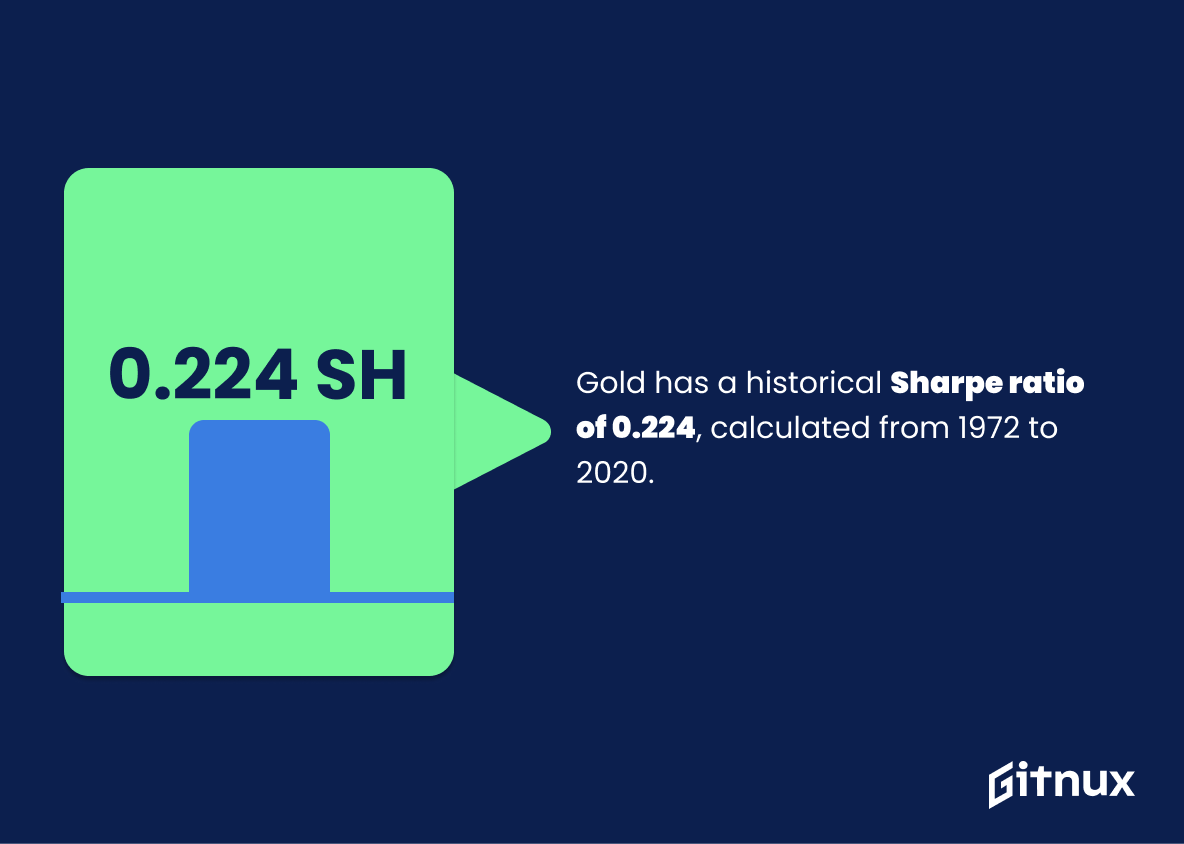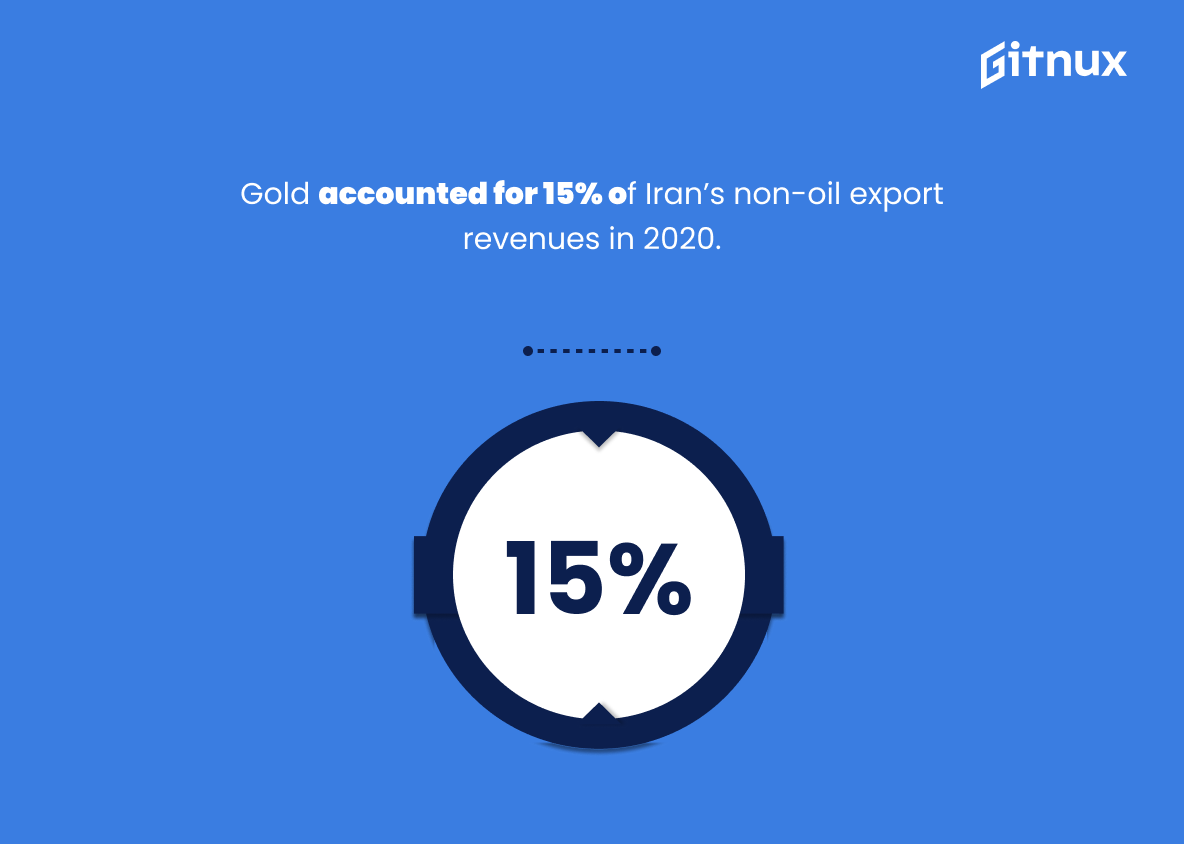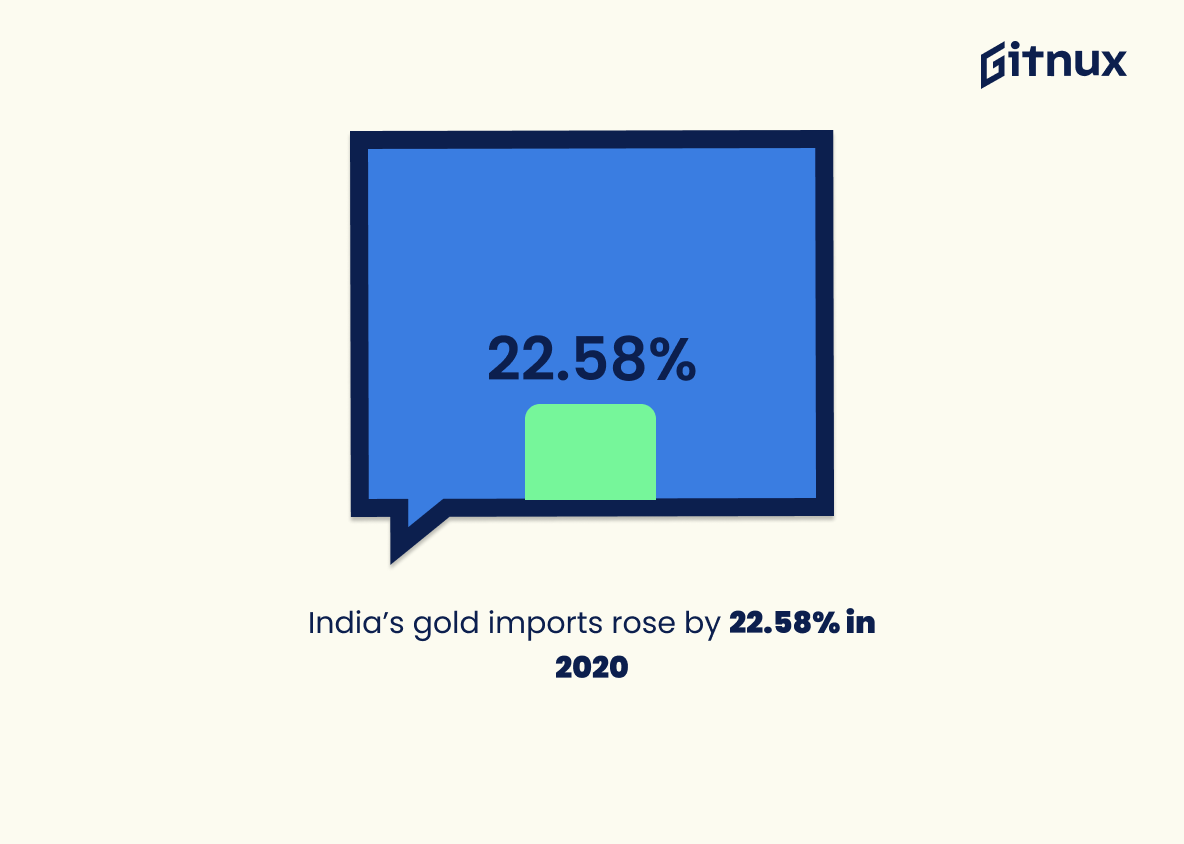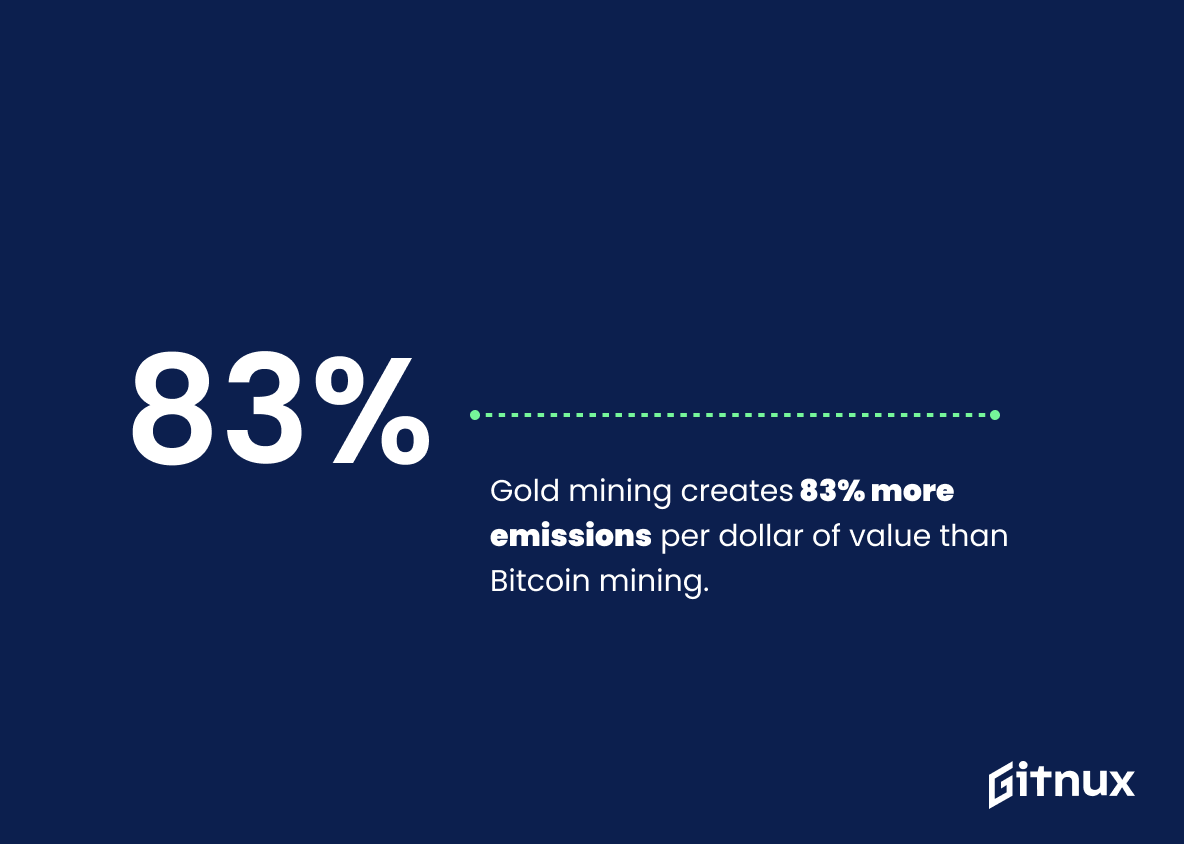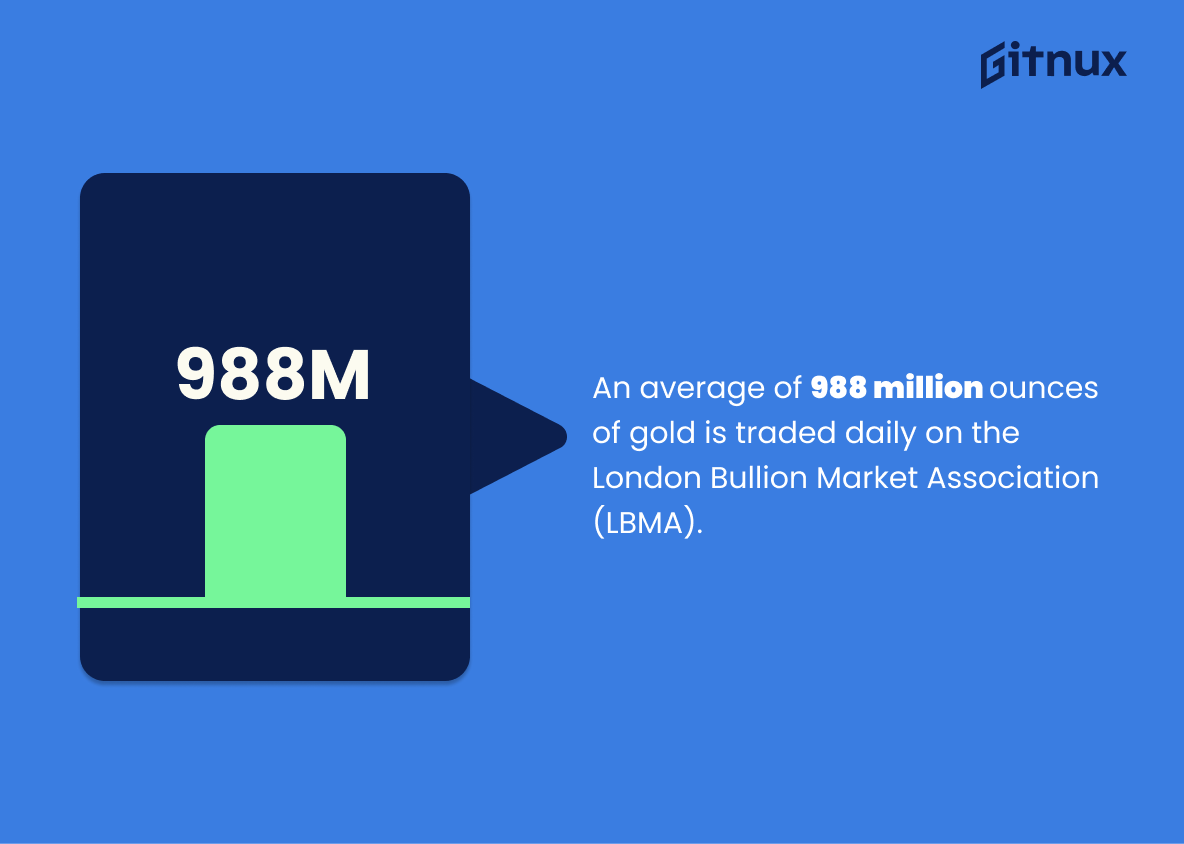Gold has been a valuable asset for centuries, and its price is constantly fluctuating. In this blog post, we will be exploring the gold price statistics from around the world to gain insight into how it has changed over time. We’ll look at all-time highs, average annual movements of gold prices since 1970, inflation-adjusted peaks in 1980, central bank purchases during H1 2020 and more. Additionally, we’ll explore correlations between stocks and gold as well as ETF holdings increases in 2020. Finally, we’ll examine global production figures by country along with year-to-date changes in 2021 so far and long term performance compared to US stocks over 10 years. By looking at these various metrics related to gold pricing across different countries worldwide throughout history up until today’s current market conditions – investors can make informed decisions about their investments accordingly.
This statistic is a testament to the incredible surge in gold prices over the past few months, reaching a record high that has never been seen before. It is a clear indication of the strength of the gold market and the potential for further growth in the future. This is an important statistic to consider when discussing gold price statistics, as it provides a valuable insight into the current state of the gold market.
Gold price has increased by an average of 0.33% per year since 1970.
This statistic is a testament to the long-term stability of gold prices, showing that gold has been a reliable investment over the past 50 years. It demonstrates that gold has been a reliable store of value, and that its price has been relatively consistent over time. This is an important point to consider when discussing gold price statistics, as it shows that gold is a reliable asset to invest in.
Gold Price Statistics Overview
Inflation-adjusted gold price peaked in 1980 at $2,463/oz.
This statistic is a powerful reminder of the incredible value of gold, as it demonstrates that the price of gold has been steadily increasing over the past four decades. It also serves as a benchmark for investors, as it shows that gold has been a reliable investment over the long-term. Furthermore, it provides an indication of the potential for gold prices to continue to rise in the future.
The average annual movement of gold price from 2000 to 2020 was 10.6%.
This statistic is a crucial indicator of the long-term trend of gold prices, providing insight into the average annual movement of gold prices over the past two decades. It is an invaluable piece of information for anyone looking to understand the historical performance of gold prices and make informed decisions about investing in gold.
Central banks purchased a net 233 tons of gold during H1, 2020.
This statistic is a telling indicator of the current state of the gold market. It shows that central banks are investing heavily in gold, which is a sign of confidence in the precious metal as a safe-haven asset. This could be a sign that gold prices are likely to remain strong in the near future, making it an attractive investment option for those looking to diversify their portfolios.
Gold has a correlation of -0.06 with stocks from 1987 to 2020.
This statistic is significant in the context of a blog post about Gold Price Statistics because it provides insight into the relationship between gold and stocks over the past 33 years. It suggests that gold and stocks have had a weak negative correlation, meaning that when stocks go up, gold prices tend to go down, and vice versa. This information can be used to inform investment decisions and help investors understand the potential risks and rewards associated with investing in gold.
Gold ETF holdings increased by 30.5% in 2020.
The fact that Gold ETF holdings increased by 30.5% in 2020 is a telling sign of the precious metal’s growing popularity. It shows that investors are increasingly turning to gold as a safe-haven asset in times of economic uncertainty. This is a clear indication that gold is becoming an increasingly attractive investment option, and that its price is likely to remain strong in the coming years.
China was the largest gold producer in 2020, producing 368.3 tons.
The fact that China was the largest gold producer in 2020 is a significant statistic in the context of gold price statistics, as it highlights the country’s influence on the global gold market. This statistic is indicative of the fact that China is a major player in the gold industry, and its production levels can have a significant impact on the price of gold. As such, this statistic is an important factor to consider when analyzing gold price trends.
Year-to-date as of August 2021, gold price has decreased by 4.6%.
This statistic is significant in the context of a blog post about gold price statistics as it provides a snapshot of the current market conditions. It shows that the price of gold has dropped over the course of the year, indicating that investors may be less interested in gold as an investment option. This could be a sign of a shift in the market, and it is important to be aware of this trend in order to make informed decisions about investing in gold.
On a 10-year investment horizon, gold has outperformed 29% of the time compared to US stocks.
This statistic is a powerful indicator of gold’s potential as an investment over the long-term. It shows that gold has outperformed US stocks nearly a third of the time over a 10-year period, suggesting that gold can be a viable option for those looking to diversify their portfolios and protect their wealth.
Gold has a historical Sharpe ratio of 0.224, calculated from 1972 to 2020.
The fact that Gold has a historical Sharpe ratio of 0.224, calculated from 1972 to 2020, is a testament to its long-term stability as an investment. This statistic speaks to the reliability of gold as a safe-haven asset, as it has consistently provided investors with a return that is higher than the risk taken. This is an important factor to consider when evaluating gold as an investment option, and is a key statistic to consider when discussing gold price statistics.
Gold accounted for 15% of Iran’s non-oil export revenues in 2020.
The fact that gold accounted for 15% of Iran’s non-oil export revenues in 2020 is a telling statistic that speaks volumes about the importance of gold in the Iranian economy. It is a clear indication that gold is a major source of income for the country and that its price fluctuations can have a significant impact on the country’s economic stability. This statistic is especially relevant in the context of a blog post about gold price statistics, as it provides a valuable insight into the importance of gold in the Iranian economy.
81% of US investors surveyed in 2021 consider gold to be a safe investment asset.
This statistic is a testament to the enduring appeal of gold as an investment asset. It shows that even in the face of economic uncertainty, investors still view gold as a reliable and secure option for their portfolios. This is an important point to make in a blog post about gold price statistics, as it demonstrates the continued trust that investors have in gold as a safe and profitable asset.
India’s gold imports rose by 22.58% in 2020.
This statistic is a telling indication of the state of the gold market in India. It shows that despite the economic downturn caused by the pandemic, gold imports in India have increased significantly. This could be a sign that investors are turning to gold as a safe haven asset, as gold prices have been relatively stable throughout the pandemic. This could be a sign of increased demand for gold in India, which could lead to higher gold prices in the future.
Gold mining creates 83% more emissions per dollar of value than Bitcoin mining.
This statistic is a stark reminder of the environmental impact of gold mining compared to Bitcoin mining. It highlights the need for more sustainable practices in the gold mining industry, and serves as a warning to those considering investing in gold. It also serves as a reminder that, while gold may be a valuable asset, it comes with a hefty environmental cost.
An average of 988 million ounces of gold is traded daily on the London Bullion Market Association (LBMA).
This statistic is a testament to the sheer volume of gold that is traded daily on the London Bullion Market Association (LBMA). It highlights the importance of gold as a commodity and its significance in the global economy. It also serves as a reminder of the immense liquidity of gold, which makes it an attractive asset for investors.
The value of the gold market is estimated to be 3 times larger than the silver market.
This statistic is a telling indication of the relative importance of gold and silver in the market. It highlights the fact that gold is a much more valuable commodity than silver, and that it is likely to remain so in the foreseeable future. This is an important point to consider when discussing gold price statistics, as it can help to inform decisions about investments and other financial decisions.
Gold storage vaults in Switzerland hold approximately 7,000 tonnes of gold, or 5% of the world’s total.
This statistic is a powerful indicator of the importance of Switzerland in the global gold market. It shows that the country is a major player in the gold industry, with a significant portion of the world’s gold reserves held in its vaults. This is an important factor to consider when looking at gold price statistics, as it can influence the supply and demand of gold, and thus the price.
Gold makes up 9% of the average balanced investment portfolio, according to the World Gold Council.
This statistic is a testament to the importance of gold in a balanced investment portfolio. It shows that gold is a valuable asset to consider when diversifying investments, as it can provide a stable source of returns. This is especially true in times of economic uncertainty, when gold can be a safe haven for investors. As such, this statistic is an important reminder of the value of gold in a portfolio.
Conclusion
The statistics presented in this blog post demonstrate the importance of gold as an investment asset and its impact on global markets. Gold prices have reached all-time highs, with central banks purchasing a net 233 tons during H1 2020 alone. Inflation-adjusted gold price peaked in 1980 at $2,463/oz., while year to date (as of August 2021) it has decreased by 4.6%. The average annual movement of gold price from 2000 to 2020 was 10.6%, and 81% of US investors surveyed consider it a safe investment asset for their portfolios. Additionally, India’s imports rose 22.58% last year and Switzerland holds approximately 7,000 tonnes or 5% of the world’s total stored in vaults there; making up 9% of balanced investments according to World Gold Council estimates . With these facts taken into consideration, we can see that despite some fluctuations over time due to market conditions such as inflation or stock correlations (-0.06), gold remains one of the most valuable assets globally both now and historically speaking – offering stability even when other markets are volatile..
References
0. – https://www.economictimes.com
1. – https://www.portfoliovisualizer.com
2. – https://www.seekingalpha.com
3. – https://www.financialtribune.com
4. – https://www.coinshares.com
5. – https://www.investopedia.com
6. – https://www.marketwatch.com
7. – https://www.gold.org
8. – https://www.kitco.com
9. – https://www.finder.com
10. – https://www.usinflationcalculator.com
11. – https://www.ft.com
12. – https://www.lbma.org.uk
13. – https://www.statista.com
14. – https://www.macrotrends.net
